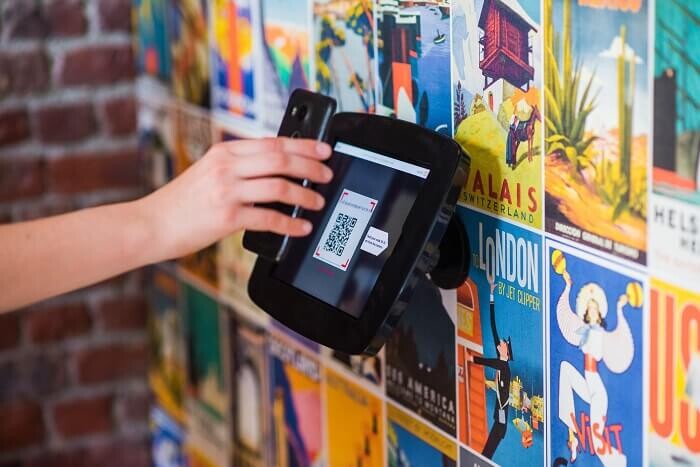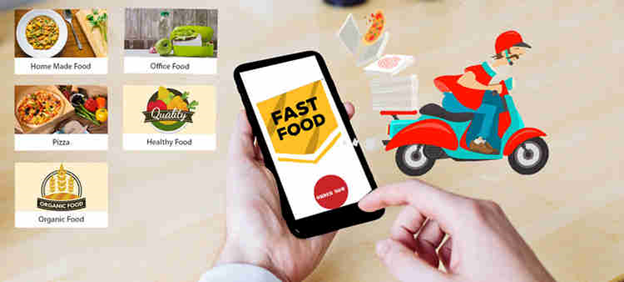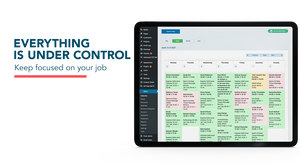During the 2020 global COVID-19 outbreak, online food protocol (FD) advantages are obvious, facilitating consumer access to ready-made meals. And to allow food suppliers to continue to operate. However, the FD online is not without criticism, with reports of consumer and restaurant boycotts. Hence, it is time to examine and review the broader implications of the online FD and what they mean for its stakeholders. Using the three pillars of sustainability as a lens to review the impacts, this review presents the most up-to-date research in the field, revealing a range of positive and negative effects.
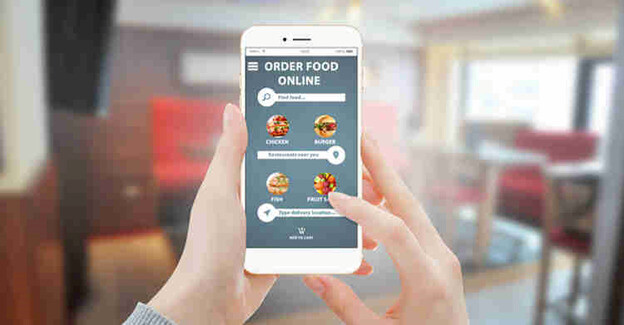
From an economic standpoint, while online FD offers job and sales opportunities, it has been criticized for the high commission, it charges restaurants, and questionable working conditions for those deliveries. From a social perspective, online FD influences consumers’ relationship and their food and affects public health outcomes and transportation systems. Environmental impacts include substantial waste generation and its high carbon footprint. In the future, stakeholders must consider the best way to mitigate the negative effects and promote the positive effects of online FD to ensure that it is sustainable in every sense.
Economic growth and the growing penetration of broadband are driving the global expansion of e-commerce. Consumers increasingly use online services as their disposable income increases, electronic payments are becoming more reliable, and the reach of suppliers and their delivery network expands. Online to offline (O2O) is a form of e-commerce where the consumer is attracted to an online product or service and is asked to complete a transaction in an offline context.
A commercial O2O sector rapidly expanding is the use of online feed protocol (FD online) platforms. Around the world, the rise of online FDs has changed the way many consumers and food providers interact, and the sustained impact (defined by the three pillars of the economy, society, and environment) of this change has yet to be fully evaluated. Part of the difficulty in assessing its impact is that scholars approach this topic from many different disciplines.
Consequently, the objective of this review consists of three objectives: Conduct an interdisciplinary assessment that incorporates scholarly research on a wide range of areas affected by increased online use of FD.; discuss the opportunities and challenges that these impacts pose; and highlight opportunities for action by all stakeholders, including online FD industry practitioners, policymakers, consumers and academia, to maximize positivity and to reduce its adverse effects.
Overview Of The Field Of Online Order Food Platforms
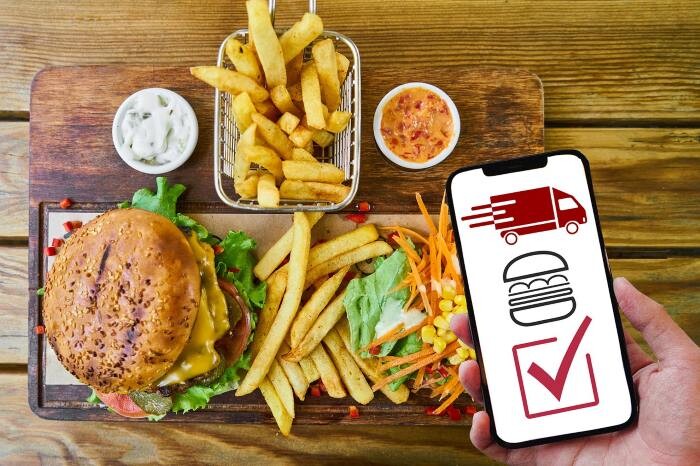
The size of the e-commerce market has seen strong growth over the past decade, as customers are increasingly moving online. A diverse range of factors drives shifts in the way consumers shop, depending on the market or country, others due to changes worldwide. These changes include increased processing income, especially in developing countries; longer working and commuting time; increase broadband penetration and improve the safety of electronic payments; loosen trade barriers; an increase in the number of retailers with an online presence; and greater awareness of consumer e-commerce.
The strongest growth in e-commerce over the past few years occurred in China, where, in 2019, sales of $ 1.935 trillion – amounts three times higher than spending in the United States (586.92 billion US dollars), the second-largest market. In particular, China represents 54.7% of the global e-commerce market, nearly double that of the next five highest countries (USA, UK, Japan, Korea, Germany) combined. The rise of e-commerce in the Asia-Pacific region highlights the huge increase in spending during key online shopping days from 2015 to 2019.
In particular, it is noteworthy that the US $ 38.4 billion spent on Singles Day (November 11) in the Asia-Pacific region in 2019, the amount more than double the total of 9 US $ 4 billion is spent on Black Friday in North America and much of Europe and the US $ 7.4 billion is spent on Electronic Monday in North America. The top e-commerce platforms around the world vary by region and include platforms that are now household names, such as Amazon (United States), Alibaba (China), and Flipkart ( India).
The rapid growth of e-commerce has created many new forms of business, such as B2B (business to business), C2C (customer to customer), B2C (business to customer), and O2O (online to offline). O2O trading is a marketing method based on information and communication technology (ICT) in which a consumer orders goods or services online and receives them at an offline store.
One of the key developments driving the O2O commercial boom has been the proliferation of smartphones and tablets and infrastructure development to support payments and deliveries. In 2019, there are 5.2 billion smartphone connections, and by the end of 2020, it is predicted that half of the people in the world will have access to mobile Internet services.
O2O services have appeared in many different sectors, including purchasing various products and services, such as food, hotel rooms, real estate, or car rental. Online FD refers to the process by which food ordered online is prepared and delivered to the consumer. The growth of online FD has been underpinned by the development of integrated online FD platforms, such as Uber eat, Deliveroo, Swiggy, and Meituan.
Online FD platforms serve a variety of functions, including providing consumers with a wide variety of food choices, taking orders, and passing these orders to food manufacturers, payment supervisors, and Food delivery organization and Sustainability 2020, 12, 5528 3 of 17 the provision of monitoring facilities. Food delivery applications or ‘applications’ (FDA) work in the broader context of the online FD because they allow ordering food through mobile applications.
Food delivery service providers may be classified as Consumer-to-Restaurant Delivery or Platform-to-Consumer Delivery. Service Providers Delivery from restaurants to consumers who process and deliver food, such as KFC, McDonald’s, and Domino. Orders can be made directly through the restaurant’s online platform or a third-party platform. These third-party platforms vary from country to country and include examples, such as Uber eats in the US, Eleme in China, Eat in the UK, and Swiggy in India. Third-party platforms also offer online delivery from partner restaurants without necessarily providing delivery services themselves, a process defined as Platform-to-Consumer Delivery. Online FD requires highly efficient and scalable real-time delivery services. Restaurants can use existing staff for self-delivery, such as using waitresses in some small restaurants or using specialized delivery teams recruited and specifically trained. This role is seen in several major restaurant brands, such as KFC, Dominoes, and Xibei.
Additionally, restaurants can use crowdsourcing logistics, a network of deliverers (riders) who are independent contractors, a model that provides an efficient food delivery method—low cost. Online FD platforms may be responsible for recruiting and training professional deliverers. They can also utilize logistics from community human resources, using non-essential deliverers’ works for the online FD platform. Professional shippers are usually trained, and at least part of their salary is guaranteed, while partly based on commission. In contrast, independent shippers often referred to as “riders,” are paid a commission (by order).
The emergence of online FD is a global trend, with many countries worldwide having at least one major platform for food protocol (Table 2). China leads in the online FD market share, followed by the US with developing markets India and Brazil, showing a fast compound annual growth rate (CAGR) (> 9% / year). The online FD industry has been very proactive in developing new markets and cultivating consumers’ eating habits.
For example, in 2018, an advertising campaign by online company Foodpanda, based in India, provided consumers with huge discounts, leading to Foodpanda increasing its number of users by 10. times. RMB (443 million USD) in three months in a successful marketing strategy to increase market share to more than 50% of the Chinese market. Although online FD is powerful in some regions, overall worldwide, online FD is in its early market development stage. It will need significant investment to fund promotions and campaigns and subsidies for participating restaurants. For example, a restaurant might hold an FD-based campaign where the consumer gets an ¥ 8 discount if the total order amount reaches 20.
In fact, this discount may only result in the restaurant has to pay ¥ 2, as the restaurant will receive a ¥ 6 allowance from the FD platform (actual rules may vary between these platforms). Such an approach is beneficial for a restaurant as it will attract more consumers and orders. The key to the future of FD online is to foster consumers’ eating habits by showing them how to choose and buy food online. By offering consumers the option to dine at a lower price or by offering other services, such as free shipping, online FD platforms, and vendors incentivizing consumers used by giving up cooking at home or going to a restaurant to eat.
Online FDs worldwide are increasingly accepted and accepted by young people, and nowhere is this trend more evident than in China. A 2019 survey of 1000 college students in Nanjing found that at least 71.45% of them have used FD online for at least two years, and 85.1% use FD more than once a week. Online FD has been reported as popular with Chinese university students as it saves time (50.35% of 141 students in Hebei, China), convenient (44.35% of 124 students in Jiangxi, China), and could offer better options (39.52% of 124 students) or simply different from a canteen meal (36.17% of 141 study born).
Of course, different groups of people worldwide have different opportunities to buy food online due to cultural, technological, and economic reasons, and these differences could be the cause of billions. Online FD absorption rates vary around the world. In comparison to China, for example, a 2019 survey of 252 Greek university students aged 18–23 years reported that most of them cook at home and rarely eat out or get to eat. Food delivery (45.6%), while others mainly eat at student restaurants or cook at home (23.4%), with only 21% of students surveyed saying they had protocol eat.
Impacts Of Online Order Food Platforms
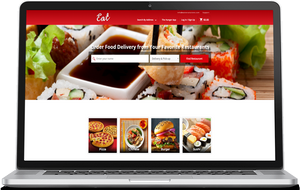
Understanding the economic, social, and environmental sustainability impacts of the FD online requires an in-depth and interdisciplinary review of recent literature. More than 60 documents have been identified on “the impact (s) of online food delivery,” using the following research tools: Scopus, Web of Science, Google Scholar, and National Knowledge Infrastructure. China (CNKI). The broad range of databases searched is due to the research question’s interdisciplinary nature and the desire to search in two languages.
Importantly, in addition to articles, research scans include books and book chapters, government policies, reports, working papers, and other gray literature sources. Given the newness of the online FD sector, our initial searches suggest that a systematic review of scholarly literature is impracticable due to the simple lack of publication. Sustainable impacts that make it possible to draw quick and sure conclusions about the state of the field. Therefore, a more exploratory approach has been adopted to identify worthy of further exploration and introduce them to encourage future research.
Economic impact
The FD online industry’s rise has brought employment opportunities to many people across various jobs, including chefs and restaurant administrators, delivery staff, or the programmers behind the Application / online platform. Besides, the online FD industry has become a trend for supporting industries, including companies that manufacture, sell, or service electric bicycles and companies involved in the manufacture and distribution of bags—food packaging. The large online FD platforms employ thousands of workers, with Meituan and Eleme in China employing around 1.17 million in delivery jobs.
Likewise, Swiggy in India has 17,000 delivery staff, and US-based online FD firm Uber Eats has more than 10,000 employees. While it is certain that the online FD industry has provided many jobs, especially in the delivery sector, concerns have been expressed about the poor working conditions suffered by shippers; These include the standard nature of their work, their high workloads, the limited training many people receive, and the risks they face for their personal safety during real delivery.
These limitations mean that while there are many job opportunities for deliverers, job satisfaction is often low, and wear rates are high. The online FD also directly impacts the traditional restaurant industry, and many restaurants have had to change the way they operate to continue doing business. As the FD online industry began to gain a foothold, traditional restaurants with storefronts actually saw a decline in in-store dining and customer visits as more and more customers. They start to order food online and eat it at their restaurant, usually at their home or workplace. As a result, many food businesses, which responded quickly enough to changing customer demand by adopting online FD, have experienced a decline in profits. As discussed above, when first starting FD online, Sustainable 2020, 12, 5528 7/17, initially, a restaurant could perform very well and get more customers and orders. (due to the online FD platform running promotions and subsidies). However, the restaurant’s overtime profits can be reduced by offering fewer subsidies or requiring higher commissions to the online FD platform.
This profit reduction may be more apparent for small restaurants that are not as negotiable as the larger online FD providers. The increase in commission costs may lead restaurants to look for other online FD platform providers, which can be difficult to find in markets where individual online FD platforms are unique. Virtual rights or restaurants can opt-out of online FD. Additionally, it has been reported that online FD platforms may place undue charges on small restaurants, such as leaving them or shippers liable for refunds due to delivery errors – even if the restaurant or the delivery person has no-fault. In general, however, online FD is an important way to engage with consumers and gain revenue for many restaurants. This is particularly evident during the lockdown in 2020 due to the emergence of the SARS-CoV-2 virus, with online FD documented allowing more food businesses to survive.
In the well-developed online FD sector, food businesses have realized that they can reduce their dining area, thus saving the costs associated with providing space and space. This can be used to provide more room for their expanding online FD services. The final manifestation of this trend is the development of so-called ghost stoves (also known as cloud cookers or dark cookers) that have become relatively common in the UK, US, and India. These food delivery businesses have absolutely no physical stores, and online orders are their only income source. Blending with a real store has many advantages for restaurants, including reduced costs associated with premises, receptionist and waiters, the ability to increase menu diversity, concepts or even commercial Effectively limitless, the ability to run multiple websites, and offer a wide range of dining experiences is served by a kitchen.
Such kitchens can also take advantage of the size advantage that allows them to invest more in streamlining delivery management, thereby helping them deliver food to consumers more promptly and cost savings more. Despite those obvious advantages of ghost stoves, there is still concern about how effectively ghost stoves can be adjusted. In China, for example, the occurrence of certain clearly reported food safety issues led to the China Food Drug Administration (FDA) announcing in 2017 that all suppliers of online food and drink services must be licensed and own a physical store to operate under the local FDA oversight. Interestingly, despite this claim, there is still interest in ghost kitchens in China.
Social impact
Online FD influences the relationship between consumers and their food by changing how consumers obtain, process, and consume food. In turn, these changes impact human-to-human relationships, leading to a significant debate about whether online FD enhances or reduces the quality of time spent with family and community interaction. . Traditionally, family members communicate with each other and enjoy the comfort of being together while doing normal aspects of food-related home life – such as shopping.
Grocery, prepare, and cook at their home. Indeed, in some cases, it has been reported that married Korean women use FD online less often because they believe they have a moral obligation to prepare meals for their families. In contrast, other studies report that online FD is seen by some Chinese and UK consumers to provide meals quickly and easily, thus helping them spend time with family. For example, a qualitative study in Guangzhou (the largest city in South China) of people between the ages of 18 and 35 who ordered take-out meals at least once a week found that they used Use FD online as it allows them to enjoy the comfort of their home, and remain involved in the foods and lifestyles they love, without the stress involved in buying and cooking food—sustainability, 2020, 12, 5528 8 of 17.
There is no doubt that online FD can save time shopping, cooking, or cleaning up afterward. According to research conducted by the Center for Network Economics Research and Knowledge Management of the Chinese University of Sciences, each online FD order is saved for at least 48 minutes. Qualitative research from Guangzhou shows that it is possible to “save” at least two hours a day by opting to use FD online, and these consumers prefer to order online during their commute so that they can relax and enjoy food when you get home.
A reporter interviewed white-collar workers in Shanghai, China, reported that many workers feel that they have to work fast and believe they have no time to go out for lunch. Online FD, especially if ordered together with coworkers, saves them time and promotes better communication. They can share mealtimes, discuss restaurants, and which meals to order online and chat with each other while eating. In Italy, the Just Eat Observatory saw a 137% increase in orders for lunches delivered in 15 Italian cities in 2017.
They assume staff are increasingly ordering and eating the meals are delivered directly to their office. There are differing views on how online FD influences social relationships among friends. In a study of 365 students at Ningxia University, China, 34.2% of students choose to order online because they have no one to eat with; The author assumes that university students do not want to integrate into society. In qualitative research from Guangzhou, it was also reported that some novices, even though they share an apartment with others, prefer to order food and eat alone in their rooms. This fact has been posted because many young people in China live independently and individually and do not want to integrate into society.
Overall, it has been reported that people tend to only share food with close family members, such as young couples living together, colleagues working together, or students living together in the dormitory. Thus, Online FD offers those wishing to eat alone the opportunity to do this without compromising on taste, quality, or value, while also offering groups that want to eat together to share food and delivery. Besides, Online FD provides access to a wide range of meal options for those who want to eat late due to work or lifestyle choices.
For example, Eleme reports that in 2018, between 21 hours and 24 hours, more than 170,000 lamb skewers, 100,000 beef skewers, and 70,000 chicken burgers were consumed in Shanghai. Most orders at night came from downtown and hospitals (probably due to overtime workers or hungry patients outside of the usual hospital mealtimes). By increasing food availability and choice and reducing barriers to cost and effort consumption, the online FD poses an inevitable challenge to the public health system. by promoting a sedentary lifestyle. It does this by extending the range of the food environment.
Traditionally, the neighborhood food environment covers about 1.6 kilometers, equivalent to a 20-minute walk from home, work, or school. With online FD, the range of food and beverage services can be expanded to 10 km and beyond. What’s more, the community food environment is often filled with unhealthy choices. For example, a survey in Xi Hu District, Hangzhou, China, found four times more “unhealthy” food stores than “healthy” stores, and while 41.86% of the total several grocery stores provide food delivery services; Fast-food restaurants account for 65.53% of these suppliers, thereby increasing exposure to unhealthy food choices available in fast food establishments.
Also, making food collection easy, with just a few taps on the keyboard to get the food delivered to the door, Online FD may promote unhealthy sedentary lifestyles. Researchers have expressed concern that food delivery apps could hurt the health of Americans. Furthermore, a study of 1220 university students in Beijing, China, found that a high frequency of online-delivered food consumption was associated with a non-medical specialization, preferring foods high in fat and sugar. High, sedentary, and not surprisingly high BMI. , with 11.6% of students surveyed are overweight or obese.
As discussed above, online FD has provided job opportunities for many FD workers. However, this opportunity also affects the transport system by increasing congestion on the road. Due to the use of the online FD platform’s commission and management system, shippers often race against the clock to meet delivery deadlines and to get higher commissions, which in turn may influence road safety because the driver may ignore the traffic lights and fail to correct road conditions, increasing the chance of a traffic accident. For example, in Nanjing, China, in the first six months of 2019, there were 3,357 traffic accidents related to electric bicycles delivering food, causing 2584 injuries and three deaths.
To control food delivery-related traffic problems, several universities in Jiangsu and Anhui provinces in China have banned vehicles from entering their campus – a move that gets more than one half (51.69%) of the students supported. On a more positive note, the online FD and its shippers provided an important lifeline during the 2020 COVID-19 pandemic for tens of millions of people isolated at home. Online FD not only provides meals but also provides jobs for people who prepare or deliver food.
Most of the major online FD platforms adapt their food delivery applications so that shippers and consumers do not have to have direct contact during this time. Contactless lockers have also been installed in hospitals so food deliverers can stay safe and medical staff unlock them with QR codes. Furthermore, given the no-go conditions that have been imposed in some countries due to the pandemic, many of the people’s meal options have shifted from eating out or venturing out to grocery shopping and cooking at home processed food online.
For example, many essential employees have started or increased their online FD use to spend more time on their jobs. During this time, several online FD platforms reached out to their communities in various ways, such as those in China, where they thanked medical staff for their commitment by distributing free meals. In addition to receiving positive media attention by taking social actions, the COVID-19 pandemic has raised several ethical concerns, including the appropriateness of giving to people.
Exposure goods risk infection, especially when they are underpaid, not highly guaranteed employment. Also, in some countries when restaurants started to reopen, there was public debate about the high commission (up to 35%) charged by online FD providers, for example like Uber eats, and there has been a public movement to support restaurants more directly by ordering and picking food directly from them. Additionally, several online FD suppliers have been sued in the US during the COVID-19 pandemic for allegedly exploiting their dominance in delivery to impose fees through higher menu prices.
Environmental impact
One of the most pressing environmental concerns that can be seen from the dramatic rise of online FD is the sheer volume of plastic waste generated and how to deal with it. The efficiency that different countries handle the plastic waste generated by their online FD depends on their recycling infrastructure and their online FD growth. For example, due to the rise of online FD in China, total packaging waste volume had increased from 0.2 million tons in 2015 to 1.5 million tons in 2017.
The waste In 2016 arising from online FD in China was estimated to be 1.68 million tons, including 1.33 million tons of plastic waste and 0.35 million tons of wooden chopsticks. A less obvious waste associated with online FD has used batteries from e-bikes of food delivery people. In 2016, 19,507 batteries (including 17,285 lead-acid batteries) were disposed of. In China, in 2016, electricity used in-vehicle charging, and waste disposal was estimated to have indirect GHG emissions of 73.89 Gt CO2eq. By 2020, in many parts of the world, the use of disposable, disposable food packaging will increase due to the COVID-19 pandemic, as many consumers believe disposable packaging is safer and more hygienic.
Since online FD packaging waste in China is often contaminated with food residues and, therefore, has a low residual value, they are often mixed with other municipal solid waste (MSW) and disposed of by burial hygienic filling (62% in 2016, the national average), incineration (32%), or illegal dumping and open burning (6%). In China, it is reported that 65% of cities are Sustainable by 2020, 12, 5528 10 out of 17 cities are surrounded by municipal waste, and 25% of them have minimal space for burial fill.
Also, in some major cities in China, an emerging environmental issue is the scene of office buildings surrounded by online FD waste. In contrast, in countries with more developed waste management systems and increased online FD is not as rapid as in China, plastic waste has been relatively well managed. It is relatively understated. Learning. For example, in the UK, in 2018, take-out boxes accounted for only 5.1% of plastic items littered, far behind cigarette filters (31.9%) and wet towels (31.9%).
In China, despite the scholarly recognition that the FD online poses major environmental challenges, policymakers or consumers have expressed little concern over this issue. This is partly because only 1% of the plastic in municipal waste comes from food transport. As a result, the government is working harder to dispose of other plastic waste types, such as plastic bottles and bags.
Meanwhile, for the average consumer, despite being aware of the impact on the environment, they rarely think about how food and food-related waste are produced; many people do not count to keep leftovers for later meals or think about reusing plastic boxes or bags or handle chopsticks. Only 21.1% of the 884 university students surveyed in Changchun, China, in 2019, separated food and containers after consuming, with 67.2% of them throwing away leftovers containers.
Research shows that lack of knowledge is the main cause of this happening and that only a small number of students (6.4%) understand how to classify waste. To some extent, the lack of residential facilities (including the lack of recycling bins) contributes to this problem.
Research among white-collar workers at office buildings in Chengdu, China, says that without providing separate recycling bins, consumers end up dumping all their waste in one Single bin, even if they believe they should separate the garbage. However, both the government and the online FD sector are starting to reduce plastic waste.
‘The Implementation of Urban Waste Classification, ‘announced by the Chinese government in 2017, clearly states that 46 cities across China should implement the mandatory classification of municipal waste. By the end of 2020, the recycling rate of domestic waste in each city must reach more than 35%.
Shanghai was the first city to implement this system in July 2019, and the proportion of municipal solid waste sent to landfills has decreased from 41.4% in 2018 to 20% in 2019. The online FD industry is also looking to improve sustainability information. For example, Meituan in China launched the “Green Hill Plan” in 2017 and upgraded it to the “Green Hill Partnership Program” in August 2018. To unite the partners to protect the environment, this program has sponsored tree planting in Yunnan and Gansu.
Furthermore, in China, Eleme’s online platform now offers consumers the option of “unnecessary disposable cutlery.” However, it is noted that even if a consumer chooses the “unnecessary disposable cutlery” option, many restaurants will still provide a food set as it is less time consuming than distinguishing who needs the cutlery and who doesn’t. Similarly, platforms in the UK have cut back on automatic cutlery supplies, with reports that “opting in the tool” instead of “opting out” would be more effective.
The degree of food waste caused by the online FD, which is contributing to the global food waste burden, is a matter of debate because while consumers tend to over order and give up food, the counter-argument is that restaurants process food more efficiently, and therefore, it is less wasteful if meals are prepared in restaurants. Obviously, an ideal result would be to gain benefits from restaurant preparation without wasting consumer food.
Online FD food waste is often associated with companies placing a “minimum price” requirement, meaning consumers pay more food than they need or order food with roommates to Meet the “minimum price” for free delivery service. Incentives to order more leads to the elimination of leftovers, especially when consumers don’t want or are unable to stock up on leftovers because they don’t want to have the same meals again or run into trouble when bringing it home from the office, or they cannot store it because they live in a dormitory.
Therefore, it is not allowed to have a refrigerator in their room, for example, Monday, compared to Sustainable 2020, 12, 5528 11 of 17 ordered in a real restaurant, where there is a variety of sensory cues to consumers, such as the fragrance and image of food, is difficult for consumers to use FD online to make exact assumptions about serving sizes, as well as flavor.
This means online FD food is more likely to be thrown away due to an unexpectedly poor taste or large unwanted serving size. A survey conducted in Changchun, China, found that 90.1% of the 884 surveyed college students left half of their food uneaten. One counter-argument is that food waste is reduced when using FD online since online FD generates less waste than cooking at home or eating at a restaurant.
According to a 2012 qualitative study of 19 UK households, cooking at home in some cases leads to producing more food than people need. As a result, wasted food. . Food waste is also a serious concern when eating in restaurants. In China, a 2017 survey of 3557 tables in 195 restaurants across four cities reported that the amount of food waste generated in restaurants-dining is about 11 kg/serving/year, similar to garbage in Western countries.
This high level of food waste has been recognized in the literature partly due to the Chinese cultural value of “mianzi,” in which over-ordering is considered an important part of hospitality. When using FD online, food waste can be minimized by ordering expensive, smaller portion size foods, thus still meeting the “minimum price” requirement for on-line FD gland while receiving a reasonable amount of edible food. In the face of rising public concern about the high levels of online FD-induced waste, industry stakeholders are beginning to act to be part of the solution rather than simply creating the problem.
The field includes compelling platforms with access to real-time location-based data. Leveraging this power, in 2018, Door Dash in the US introduced a social impact program to tackle hunger and food waste by using its network of restaurant partners to combine processed food for the hungry. In another example, Seamless in the US partnered with a No Hungry Kids program. The customer had the option of rounding up their online FD payment to deliver meals to hungry children.
Furthermore, Postmate has launched a program in Los Angeles and 19 other US cities. Participating restaurants can use their food delivery app to deliver leftovers or unwanted food to a local shelter. Several food aid organizations in the United States have begun to take advantage of mass transit to transport excess food from donors to unsecured food recipients more efficiently.
However, such initiatives’ success depends on obtaining a substantial amount of participation by donors and shippers. In addition to food and plastic waste, another environmental issue not to be missed is the online FD, which generates huge amounts of carbon emissions.
In a 2019 study in China, focusing on packaging lifecycle impact assessments from online FD, data from 35.61 million orders from an online FD platform across eight cities were rated price with 334 sets of packaging samples from restaurants, including the box, bag, chopstick, cup, and straw, etc.
Taking Beijing as an example, the authors found that online FD generated 0.185kg of solid waste and 0.68 kg CO2 eq/kg Global warming potential (GWP) from each order and the production and handling processes of the packaging, which account for 45% and 50% of the total environmental impact, respectively, make them the major environmental impacts across the industry.
The delivery phase (including delivery from the manufacturer to the restaurant, from shipper to the consumer, from consumer to destroyer) accounts for only 5% of the impact on the environment. The most serious environmental impact in this new industry is solid waste pollution, followed by water pollution, resource consumption, and air pollution.
The online FD industry is trying to discover many ways to improve its image, including electric bicycles and bicycles and even drones to deliver food. This helps to improve the environmental impact of delivery and helps to reduce road traffic safety problems. Some delivery service providers currently use cars or motorcycles that generate exhaust fumes, contributing to air pollution.
Scientists have recommended that food transporters use cargo bicycles because they are quiet, zero-emission, and less annoying to the people. Delivering food by drones is also less polluting because drones use batteries. Despite potential problems associated with using drones for food delivery, such as time risks, performance risks, and psychological risks, the researchers still believe That Sustainability 2020, 12, 5528 12 out of 17 drone-based deliveries could reduce CO2 emissions in delivery service, and therefore, may be worthwhile with other risks.
These low-carbon transport innovations could reduce greenhouse gas emissions. Many foods and beverage companies have been preparing to commercialize air food delivery—drivers, such as Yogiyo in Korea and Domino pizza in New Zealand.
Practical Implications Of Online Order Food Platforms
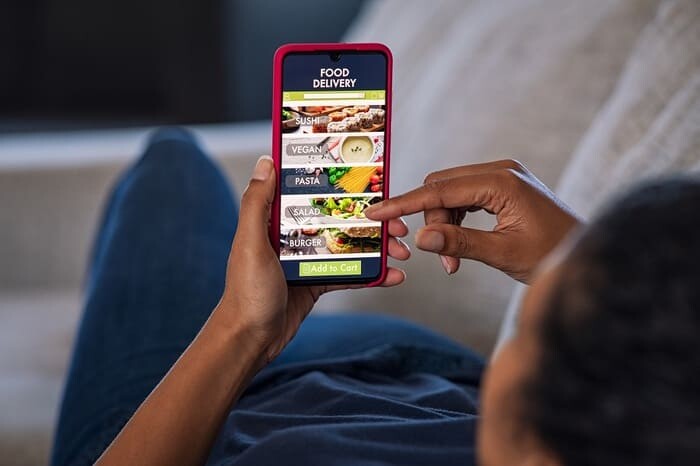
To ensure the sector’s long-term sustainability, the action is now needed to increase positive impacts while minimizing negative impacts.
Practitioners
To improve economic sustainability by improving employee retention, online FD suppliers may need to adjust delivery time rules about benefits. And the safety of the shipper. In terms of social sustainability, online FD platform providers can help tackle food waste by exploring ways to avoid better pressuring or encouraging consumers to be overbought. About environmental sustainability, the online FD industry should consider working with both the packaging manufacturer and the restaurant sector to explore options for developing and using more sustainable packaging materials.
Policymakers
Policymakers should consider better regulation to ensure that shippers’ right working conditions could lead to lower wastage rates and, therefore, improve economic sustainability. To enhance social sustainability, policymakers can raise community awareness of sustainability and healthy eating habits through education. More importantly, they can clarify each stakeholder’s rights and responsibilities in waste management (e.g., waste management companies, online FD companies, and consumers. ) by improving related policies and regulations. In terms of environmental sustainability, policymakers can encourage the packaging industry to develop new packaging materials through incentives, such as taxes, subsidies, and industry support.
Consumers
Ordering wisely and eating healthily reduces the risk of wasting money buying food that is not consumed and avoids possible negative health consequences associated with consumption, providing economic and health benefits. In terms of enhancing the social sustainability of online FD consumption, users may be encouraged to order and share food with colleagues or partners to strengthen social bonds. To contribute to the environment’s sustainability, users can separate food and packaging waste after the meal is over.
This review has shown that a range of effects from the online FD affects a wide range of stakeholders in different ways, as summarized in Table 3. Although there has been an attempt to categorize these, The impact is either ‘positive’ or ‘negative’; in fact, an argument can be made for each impact to be classified differently. For example, during the COVID-19 crises, online FD had a positive effect in that it allowed people to source food without leaving home (i.e., positively impacting consumers). But using FD online at this point means contact with delivery people (i.e., negative impact on shippers).
To conclude, this review made three major contributions. First, it is the first interdisciplinary review to bring together scholarly research on a wide range of areas affected by online FDs’ increasing use. Second, it discussed the opportunities and challenges these impacts pose. Third, it highlights all stakeholders’ action opportunities, including online FD industry practitioners, policymakers, consumers, and academics, to maximize positive and reduce its adverse effects. The future of online feed protocol is exciting. To ensure the sector grows sustainably for all stakeholders’ benefit, we must continue to reflect on what is happening. And questioning whether anything could be done better.
bePOS – The Most Powerful POS System For Merchants
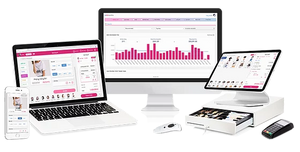
- Kitchen Display System: Get quick order status updates & Avoid any lost or forgotten tickets left at the printer.
- Staff Management: Easy to manage, track, measure, schedule; Maintain payroll details & Personalize accounts with employee-specific settings.
- Cloud-based: Stay synced anytime, anywhere & Enhance customer experience with only one information database.
- Menu Management: Add, clone, and organize menu items & Easy to modify to react with customer special order.
- Cash management: Account for and manage cash in the till with simple pay-ins and pay-outs
- CRM: Record the customer’s profiles and buying history & Drive repeat business by rewarding loyal customers.
- Inventory Management: Track recipes against menu item; Determine ingredient-level food costs with ease & Auto-updated with in-service alerts.
- Instant reporting: Post sales data daily, save time, and reduce errors & Draw insights from comprehensive end-of-day summaries and other detailed reports.
Moreover, bePOS have some special features that no POS System contain:
- Track Costs: Track recipes against menu items and determine ingredient-level food costs with ease
- Menu Engineer: Track recipes against menu items and determine ingredient-level food costs with ease
- Improve Service: Keep staff aware of inventory levels automatically with in-service alerts.
- Define Ingredients: Easily create and track ingredients, with costing and unit measure information.
- Create Recipes: Associate common ingredients with menu items using tap-to-create recipes
- Track Inventory: Easily update all menu items with ingredients in its recipe, especially; with Restaurant Inventory Management features, you can create and manage a limitless number of ingredients with the unit cost and retail price, mark any menu item out of stock, and straightforward inventory reports. Also, you can customize menu items with varied & detailed ingredients and inventory countdown. With purchase and order, you can easily report on inventory levels and suggest re-stock options.
Besides, if your restaurant needs more hardware, bePOS is considered to be the best solution for you, which includes:
- iPad & iPad STAND: Apple tablet can operate as the POS terminal. Staff can take it to the table or leave stationary at a counter. Case (or stand) enclosures for your iPad, protect it from breakage, and safely secure a counter to prevent theft.
- Cash drawer: This hardware bundle will help you build the perfect wireless experience. The cash drawer can connect through one of our supported printers and serial drawers.
- iPhone & iPad: This is a small and portable version of your tablet POS system, which allows your employee to work on the move. The fast and reliable printer has innovative functionalities for POS environments. The small size makes it ideal for customers with limited counter space.
- LAN receipt printer.
Using bePOS brings you better communication with display ticket times to keep track of turn around, which helps staff see what’s cooking and what’s ready to go. It reduces less hardware with display ticket times to keep track of turn around and help staff see what’s cooking and what’s ready to go.
bePOS helps create an ultimate service with display ticket times to keep track of turnaround, which helps staff see what’s cooking and what’s ready to go. Get reports tailored to table-service restaurants: revenue centers, item and modifier sales, customer frequency, employee sales. If it hits the bottom line, we’ve got a report for it. Try bePOS now, and we promise to give you the best experience ever!
The food delivery market is spreading among consumers. Furthermore, it is a potential area for investment. If you want to create your own food delivery website, you have two options. You can use a template for your future website and hire a development team to customize it to your needs. Alternatively, you can hire a team to develop a completely custom solution for ordering and delivering food, which can be expensive but beneficial.
Follow bePOS:



